Abstract:
Echoes of Egypt in 12th-century Bologna and 13th-century Rome
In the Middle Ages, authentic ancient Egyptian artifacts emerged from the remains of former temples of Isis in places like Bologna and Rome, where they inspired Romanesque sculptors. This paper examines the specific examples of the 12th-century Benedictine cloister of Santo Stefano in Bologna and the 13th-century Benedictine cloister of San Giovanni in Laterano, the latter created and signed by a father-and-son team from the Vassalletto dynasty of Roman marble workers. The Vassalletto family carved Egyptian-style sphinxes and lions in several places in the Papal State; here they are placed in connection with a particular family, the Conti di Segni, who owned property near three ancient Roman temples of Isis and Serapis: the Isaeum Campense, the temple of Serapis on the Quirinal, and the Esquiline Sanctuary of Isis and Serapis.
The article is written in English.
*
A revived interest in ancient Egypt is well documented for 15th-century Italy, from the recovery and study of texts like the Corpus Hermeticum and the Hieroglyphica of Horapollo to the fascination with ancient Egyptian artifacts large and small, especially those preserved in Rome.[1] Yet the distinctive arts of Egypt had already captured the imaginations of some medieval Italian artists and their patrons in 12th-century Bologna and the 13th-century Papal State, and probably with some awareness that they were dealing specifically with Egyptian works.
Egyptian Figures in 12th-century Bologna
Although Rome has always boasted a higher concentration of Egyptian artifacts than any other European city, Egyptian objects were already being imported to Italy in Etruscan times.[2] As the ties between Rome and Egypt tightened in the first century BCE, culminating with the annexation of Egypt after the Battle of Actium in 31 BCE, the volume of this trade continued to increase, leaving a scattering of Egyptian objects throughout the Italian peninsula. An ancient statue of the Nile has stood in above ground in Naples for most of its history, lending its name to one of the districts of the city, the Seggio di Nilo.[3] Temples to Isis and Serapis were erected in Pompeii, Beneventum, and Bologna as well as Rome.[4]

Fig. 1. Twelfth-century Egyptian-inspired column capitals from the Santo Stefano complex, Bologna. Photo: author.
According to his 12th-century Vita, St. Petronius, the patron saint of Bologna, built a church over the city’s temple of Isis in the 5th-century, modeling its architecture on the Holy Sepulcher in Jerusalem.[5] Subsequent construction in what became an extensive Benedictine monastic complex has made this claim impossible to verify archaeologically. However, the 12th-century loggia that connects the monastery’s various churches and chapels, the so-called “Cortile di Pilato”, features columns with capitals evidently inspired by Egyptian art. These include a papyrus capital, a lotus capital, the image of a seated scribe (Fig. 1), the figures of Jupiter Ammon with his ram’s horns and Hathor with her cow ears as well as a grotesque-looking medieval version of Bes (Fig. 2).
Both the courtyard and the neighboring cloister were probably built shortly after the discovery of the relics of St. Petronius (1143) within the round church he is said to have founded, the Basilica of the Holy Sepulcher. Some of the cloister’s column capitals show sinners being punished (a man with a huge rock on his back, a man with his head turned around on his shoulders); it seems possible that the Egyptian figures in the Cortile di Pilato should also be seen as prisoners of the sacred architecture that holds them in place. Vitruvius and his De Architectura were well known in the Middle Ages (and certainly in a university town like Bologna), with the tale of the Caryatids, punished for their treachery by having their features commemorated in stone statues that took the place of columns on a portico (Vitruvius 1.1.5).
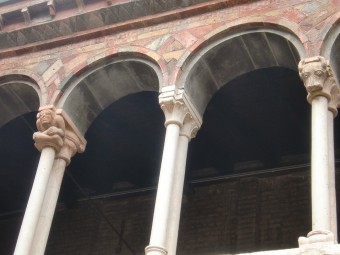
Fig. 2. Twelfth-century Egyptian-inspired column capitals from the Santo Stefano complex, Bologna. Photo: author.
Egyptian artifacts from the ancient temple of Isis must have emerged during construction of the courtyard and cloister in the 12th century, if not before; the complex sustained severe damage in the Hungarian invasions of Bologna in the 10th century, and had already been remodeled extensively in the 11th. In any event, the 12th-century report that St. Petronius had founded his church of the Holy Sepulcher on the site of an ancient temple of Isis seems to have been founded on concrete archaeological evidence as well as local legend. The ancient statues themselves probably disappeared long ago, although the Museo Civico of Bologna does preserve a number of ancient Egyptian artifacts from the collection of the University, one of the oldest such institutions in Europe.[6]
The idea that these ancient deities might be serving out a perpetual sentence as bearers of Christian architecture will recur when we turn to a set of Egyptian-inspired figures from 13th-century Rome. Again the context is a Benedictine monastery that arose near an ancient temple of Isis.
Sphinxes and Cats in 13th-century Rome
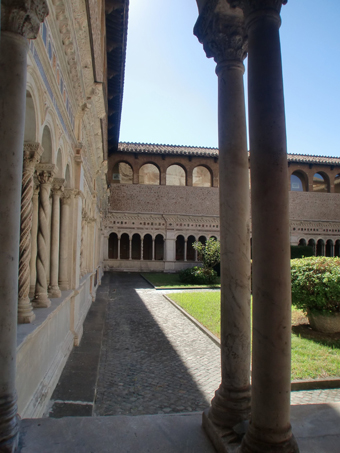
Fig. 3. The Lateran Cloister. Thirteenth century. Photo: author.
Among a large and fierce population of protective sculpted lions, the glorious 13th-century cloister of San Giovanni in Laterano in Rome (Fig. 3) also presents the images of two Egyptian sphinxes and a house cat. These crouching sphinxes, facing inward, guard the cloister’s central access to the enclosed garden with its 9th-century wellhead, while pairs of lions watch over the other two entrances. The garden is thus singled out as a hortus conclusus, a sacred space within the cloister of Sts. John the Baptist and John the Evangelist, the Benedictine monastery attached to the Lateran Basilica from the 9th century onward.[7]
The sphinxes, like the crouching lions at the other entrances, are extremely worn. Both wear the linen nemes headdress that distinguished portraits of pharaoh in ancient Egypt, and must, therefore, derive from some Egyptian source in Rome. The sphinx to the left of the entrance (Fig. 4) sports a carefully curled Classical beard and the remnants of what seems to have been an impressive handlebar moustache.
His counterpart on the opposite side (Fig. 5) is beardless and cheerful, with the remnants of a huge smile and prominent laugh lines radiating outward from the corner of each sculpted eye. Their crouching bodies are neither explicitly male nor female. Their nemes-headdresses are distinctive but not identical.
The house cat (Fig. 6) appears amid a range of lions carved along the cloister’s elaborate white marble frieze.
The artists involved in creating this beautiful cloister are known from an inscription carved into one of its pilasters: two generations of the Vassalletto family, a dynasty of marble workers from Rome. Surprisingly for a medieval artisan, the inscription is in Latin verse:
Nobilis et doctus hac / Vassallectus in arte / cum patre cepit opus/ quod solus perficit ipse.
Vassalletto, unlike most artists of his era, is evidently an educated man, who describes himself as “nobilis et doctus”, only to qualify his nobility and learning, somewhat, by the specification “hac in arte”– proving that he is also skilled in verbal rhetoric. “Noblis” may simply mean that he qualifies for the title “Magister”. As for his mastery “hac in arte”, the fact that he is completing an ornamental cloister for the supreme pontiff in the mother church of Christendom provides testimony enough.
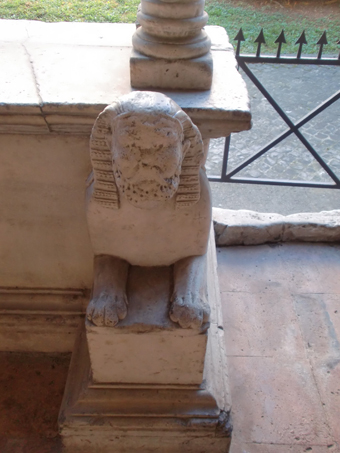
Fig. 4. Vassalletto, Guardian Sphinx. Lateran Cloister. Thirteenth century. Photo: author.
The Vassalletto dynasty can be traced over four generations of fathers and sons from the mid-12th to the mid-13th century: Vassalletto I, Pietro Vassalletto, Vassalletto II, and Nicola Vassalletto. Vassalletto the founding father carved a crouching column-bearing lion for the basilica of Santissimi Apostoli. The sculpture is poorly preserved today, but signed BASSALECTUS, a Latinized version of the family’s name.[8]
The father and son responsible for the Lateran cloister are generally thought to be Vassalletto’s son and grandson, Pietro Vassalletto and Vassalletto II.[9] Construction began on the project under Pope Innocent III, but continued under his successors Honorius III and Gregory IX, whose involvement is commemorated in the partially preserved mosaic inscription along the frieze, its large gold letters on cerulean blue (see Fig. 3) contrasting with the small inscribed signature of Vassalletto and his father.
Their presence of the sphinxes among two pairs of lions shows that they, too, served as guardians of the entry from the cloister into the central garden. There is no doubt that Vassalletto’s figures have been inspired by ancient Egyptian originals, both in their crouching posture and in the detailing of their nemes headdresses, which are similar to one another but by no means identical. Yet both of them exhibit definite peculiarities. The closest parallels to the bearded sphinx, with his Egyptian headgear and Classical curls, come from portraits of the Emperor Caracalla in a nemes, although no statues of this kind survive in Rome itself, and no statues are preserved that show Caracalla as a sphinx.[10] Still, this emperor endowed a shrine to Isis on the Quirinal and possibly another on the Caelian.[11]
The right-hand sphinx is not just smiling, but positively laughing, the corners of his eyes crinkled with mirth. James Stevens Curl notes that:
Egyptian and Egyptianizing lions and sphinxes surviving in Rome (mostly late works from Egypt or Roman versions of Egyptian originals) were used as exemplars by Cosmati artists, who emphasized the slight and mysterious smiles on the Antique versions, so that the 13th-century sphinxes (and sometimes lions as well) acquired wide smiles and wrinkles of laughter around the yes. Pairs of male and female sphinxes (as in the Lateran examples), are Revivalist rather than Echt-Egyptian [...][12]
An especially suggestive parallel to this merry sphinx comes from a worn Egyptian marble head with nemes of Roman Imperial date with what looks like a broad smile and inlaid eyes. It was found on the Via Labicana in 1875, and probably comes, therefore, from the large Isis temple in ancient Regio III, the Esquiline Hill. Unfortunately, it now lives in the storeroom of the extension of the Capitoline Museums at the Centrale Montemartini in Rome.[13]
The sculpted house cat on the Lateran cloister frieze also derives ultimately from an Egyptian original, for many Roman cats are descended from temple cats imported from Egypt to the Isaeum Campense, the Isis complex in the Campus Martius. One of the cats of Isis is commemorated in an ancient marble sculpture on the cornice of the present-day Palazzo Grazioli, and also gives her name to the Via della Gatta that runs alongside the palazzo.[14]
The Lateran cloister’s guardian sphinxes, with their Egyptian detailing, are by no means unique. Several other examples of crouching sphinxes with nemes-headdresses still survive, all from the 13th century, all preserved within the territory of the old Papal State, most of them connected with the Vassalletto family, and, as shall be argued here, connected with the baronial family that provided a series of popes in this period, the Conti di Segni. Because the circumstances of their making are so complex and the information about them is so sparse, the sphinxes continue to raise a host of unanswerable questions, beginning with the basic question: did anyone, sculptors, patrons, or scholars, know that these figures were specifically Egyptian, or specifically associated with Pharaoh?
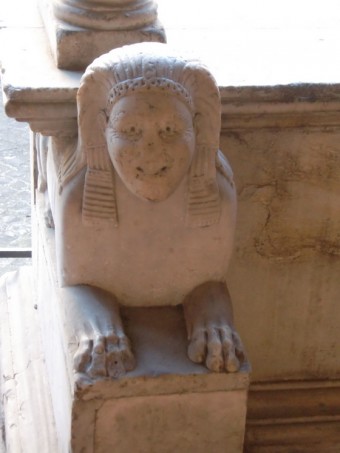
Fig. 5. Vassalletto, Guardian Sphinx. Lateran Cloister. Thirteenth century. Photo: author.
That medieval Roman sculptors were familiar with genuine Egyptian artifacts is evident both from the detailing of the Lateran sphinxes and from their crouched pose. Ever since late antiquity, Rome had been Europe’s version of Egypt, with monumental temples to Isis and Serapis in the Campus Martius, on the Quirinal, and on the Esquiline, 43 obelisks, and endless numbers of porphyry basins, granite columns, bathtubs, sculptures, table legs, paintings, furniture, miniature figurines and jewelry, not to mention the riches of Hadrian’s Villa near Tivoli.[15] Only a tiny fraction of that abundance survives to the present day.
Crouching sphinxes also appeared beneath Roman statues depicting the Nile as a classical river god, including the figure beneath Michelangelo’s staircase at the summit of the Campidoglio, who may have started life as a pediment sculpture for the Temple of Serapis on the Quirinal.[16]
Thirteenth century Roman sculptors had, therefore, a number of Egyptian models to choose from if they so desired. Furthermore, the 12th and 13th centuries were a period of active construction in Rome, including monumental porticoes and colonnades that once lined many of the main streets running through the city. The search for architectural materials to reuse, especially the ubiquitous stone columns, would have led to the discovery of ancient sculpture and other artifacts.
All three of the 13th-century popes connected with the construction of the Lateran Cloister came from Roman baronial families. Innocent III, the former Lothario dei Conti di Segni, was born in Anagni in the southern reaches of the papal state in 1160 or 1161, but studied in Rome and Paris before taking up a career in the Church. Elected in 1198, he is best known for calling the disastrous Fourth Crusade of 1204, extending official approval to Francis of Assisi and his followers in 1210, and calling the Fourth Lateran Council of 1215.[17] He died the following year. In 1228, his brother Riccardo erected the gigantic Torre dei Conti next to the Roman Forum, on land that bordered three major Egyptian sanctuaries in Rome: the Isaeum Campense, the Serapaeum, and the sanctuary of Isis and Serapis in Regio III.[18]
Normally the colossal ruins of the Serapeum have been associated with the Colonna family, whose property still engulfs the surviving remains. One of the sphinxes now in the Capitoline Museum entered their collection by the 15th century, and the 16th-century cardinal Pompeo Colonna commissioned consciously Egyptian-themed decorations for a missal.[19] However, we should probably look more closely at the connection between the Conti di Segni and these monuments to understand the Egyptian-inspired sphinxes of the Vassalletto family.
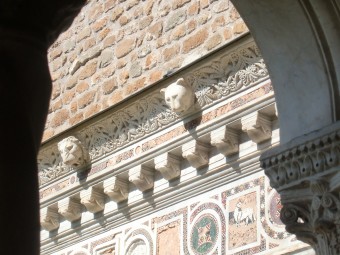
Fig. 6. Vassalletto, Lions and a Cat. Lateran Cloister. Thirteenth century. Photo: author.
Pope Honorius III, born Cencio Savelli in 1150, was a protégé of Innocent III. Elected in 1216, he continued his mentor’s interests by promoting the Fifth Crusade and encouraging the new Franciscan and Dominican orders. In hopes of encouraging his former pupil Frederick II of Germany to lead the Crusade, Honorius crowned him Holy Roman Emperor in Rome in 1220.[20] But Frederick lingered in Europe as several troops of Crusaders campaigned without success in Egypt.
The Pope’s efforts with the new mendicant orders of Christendom were more successful. Honorius approved the Dominican Order in 1216, and in 1219 invited Dominic himself to move to Rome and live in the convent of Santa Sabina. He approved the Franciscans in 1223, and died in Rome in 1227.
Gregory IX, the pope who finally finished the Lateran cloister, was related to Innocent III through his Conti di Segni mother. His name at birth was Ugolino d’Anagni, the city where he was born in 1145. A canon lawyer trained in Paris and Bologna, he approved the book of canon law called the New Compilation of Decretals in 1234, and canonized both Francis of Assisi and Dominic Guzmán. Unlike his predecessor, Honorius, he quarreled openly with Frederick II, and campaigned energetically against the Jews.[21]
The spiral mosaic column that serves as a base for the paschal candle at the Cathedral of Anagni, Gregory’s birthplace, is held up by two marble crouching sphinxes with nemes headdresses. The work is signed by Vassalletto (surely Vassalletto II).[22] Another sphinx with a nemes is walled into the entrance to the sacristy of the cathedral in nearby Ferentino.[23]
Yet another 13th-century sphinx with a nemes holds up a choir screen together with a lion in the Cathedral of Civita Castellana, a city that had a certain importance in the 13th century as a way station between Rome and Perugia, where the Curia frequently met. This work is signed by Drudo da Trivio, who also created the ciborium on the high altar of the cathedral in Anagni; the possible date is usually set around 1230, early in the reign of Gregory IX.[24] An inscription credits the decoration of the cathedral itself to a “Raniero”—if this were the powerful Cardinal Raniero Capocci, who had worked closely with Honorius III, the opulence of the church and its lion-and-sphinx parapet would find a plausible context. [25]
All of these sphinxes are carrying something: columns, walls, parapets. Like the Caryatids and Telamones of classical tradition, they have been put to work forever as a public display. In the case of the Caryatids, Vitruvius declares explicitly that these women from a treacherous city have been singled out for shame. These 13th-century sphinxes by Roman masters appear in connection with a close-knit group of popes from Roman baronial families, all well-educated, all concerned with Rome’s primacy, Crusade, and the conquest of heresy. As Erik Hornung has pointed out, by the 13th century Europe was full of pilgrims, travelers, and returning Crusaders who had passed to the Holy Land by way of Cairo and the Sinai.[26] This was certainly the case for Honorius III, under whose reign the battlefield for the Crusaders was an Egyptian battlefield at Damietta.[27] It is does not seem entirely far-fetched, then, to imagine 13th-century popes using Egyptian artifacts exactly as their pagan Roman predecessors had: to represent the triumph of Rome over every other culture—with one significant difference. Most of these sphinxes wear a broad smile. Perhaps, as the Gospel of Matthew declares (11:30), we are to believe that Christian service is an occasion for joy: “For my yoke is easy, and my burden is light.”
It seems equally possible that a man as learned as Vassalletto might have had some inkling of what he was carving as he put the finishing touches on the Lateran Cloister, in the service of a learned pope whose mother may have grown up in the valley between the huge, ruined Temple of Serapis and the remnants of the Esquiline temple of Isis and Serapis. Furthermore, if the triumph is indeed that of Christian revelation, the captive Sphinx has every reason to be smiling with the revelation of enlightenment. Egypt, after all, was also the home of Christian monasticism.
A 13th-century sphinx from the Dominican convent of Santa Maria in Gradi in Viterbo bears the signature of another Roman master: Magister Paschalis Romanus, and the date of 1286.[28] Her face and hairstyle are definitely female, although her body resembles that of the Egyptian sphinxes carved by Vassalletto and Drudo. Most significantly, however, she is a freestanding sculpture. Nothing, so far as we can tell, ever burdened her back.
For nearly three decades in the second half of the 13th century, the Curia resided in Viterbo, but the Popes had departed by the time she was made. Honorius IV, the pope who reigned when this sphinx was created, was elected in Perugia but crowned in Rome.[29] During his reign he granted many favors to the two new mendicant orders, the Franciscans and the Dominicans, and perhaps this sphinx, too, has some connection with the papacy through his favors to the Order of Preachers.
It seems likely that Master Paschal saw the same Egyptian sphinxes in Rome as his colleagues from the Vassalletto family, but we can never be entirely sure. In 2012, officers of the Italian Guardia di Finanza raided a property in Viterbo and there, under wraps, was a well-preserved Egyptian sphinx, illegally excavated from an ancient site near the village of Monterosi, halfway between Viterbo and Rome.[30] Whether it adorned an Etruscan tomb or a Roman shrine, its context has been lost. Even so, the discovery stands as a reminder that the Egyptian artifacts in Italy were more widespread and more various than we know.
Did the Bolognese artisans know that they were reproducing Egyptian art? Did Vassalletto, Drudo of Trevi, and Master Paschal the Roman know? In the case of Santo Stefano, the sculptors are certainly referring to a tradition, and surely to artifacts, associated with the very spot on which they worked. Vassalletto and Drudo, like their patrons, show at least familiarity with the characteristic poses and headgear of Egyptian sculptures in Rome, and Master Paschal, as a Roman, presumably had the same opportunities. The specific patrons and specific contexts of these works tends to suggest that they share a definite, rather than a generic meaning, in which the papacy, Egypt, and the Crusades might seem to play a likely role.
Ingrid D. Rowland is a professor at the Rome Global Gateway of the University of Notre Dame and writes frequently for the New York Review of Books. Her books include From Pompeii: the Afterlife of a Roman Town (2014), and Giordano Bruno: Philosopher/Heretic (2008).
[1] See, for example, Brian Curran, The Egyptian Renaissance: the Afterlife of Egypt in Early Modern Italy, Chicago: University of Chicago Press, 2007; James Stevens Curl, Egyptomania: the Egyptian Revival, a Recurring Theme in the History of Taste, Manchester: Manchster University Press, 1994; Eugenio Lo Sardo, ed., La Lupa e la Sfinge: Roma e Egitto dalla storia al mito, Rome: De Luca, 2009.
[2] See, for example, Jean Macintosh Turfa, Jean MacIntosh and Ann B. Brownlee, “’Worlds Intertwined: Etruscans, Greeks, and Romans’. The Kyle M. Phillips Jr. Etruscan Gallery and Symposium (“The Etruscans Revealed”) At the University of Pennsylvania Museum, 2003,”Etruscan Studies, Vol. 9, Article 24, http://scholarworks.umass.edu/etruscan_studies/vol9/iss1/24.
[3] Massimo Clemente, Stefano de Caro, and Nicola Spinosa, eds., Lo sguardo del Nilo: storia e recupero del “Corpo di Napoli,” Naples: Colonnese, 1993; Giovanni di Cecca, “La testa della Sfinge ritorna sul Corpo di Napoli”, Monitore Napoletano, 9 November 2014, http://www.monitorenapoletano.it/sito/2014/novembre/3252-la-testa-della-sfinge-ritorna-sul-corpo-di-napoli.html (June 4, 2014).
[4] See Sarolta A. Takacs, Isis and Sarapis in the Roman World, Leiden: Brill, 1995.
[5] Robert Osterhout, “The Church of Santo Stefano: A ‘Jerusalem’ in Bologna,” Gesta, 20:2 (1981), 311.
[6] The collection of the Museo Civico in Bologna can be consulted online at http://www.comune.bologna.it/museoarcheologico/ (June 4, 2016).
[7] A ninth-century cloister structure of vaults carried on granite spolia columns still exists behind the Vassalletto colonnades.
[8] E. Bassan, Enciclopedia dell’Arte Medievale, s.v. Vassalletto, http://www.treccani.it/enciclopedia/vassalletto_%28Enciclopedia-dell’-Arte-Medievale%29/ (June 4, 2014); P. C. Clussen, Magistri doctissimi Romani. Die römischen Marmorkünstler des Mittelalters (Corpus Cosmatorum I), Stuttgart-Wiesbaden, 1987; idem, “Marmo e splendore. Architettura, arredi liturgici, spoliae in M. Andaloro, S. Romano, eds., Arte e iconografia a Roma. Da Costantino a Cola di Rienzo, Rome: 2000, pp. 193-225; Manuela Giannandrea, “Creazioni à l’antique. I Vassalletto e il fascino della sfinge egizia nel medioevo romano, in Hortus atrium medievalium, 16. Les renaissances médiévales, Zagreb, 2010, pp. 1515-163.
See also A.L. Frothingham, Jr., “Notes on Roman Artists of the Middle Ages. III. Two Tombs of the Popes at Viterbo by Vassallectus and Petrus Oderisi,” The American Journal of Archaeology and of the History of the Fine Arts, Vol. 7, No. ½ (March-June 1891), pp. 38-53.
[9] Paolo Montorsi, “Su alcuni leoni di Vassalletto che derivano da un modello egiziano,” in Angiola Maria Romanini, ed., Roma Anno 1300: atti della IV settimana di studi di storia dell’arte dell’Università di Roma ‘La Sapienza’ (19-24 maggio 1980), Rome: L’Erma di Bretschneider 1983, pp. 655-674; Giannandrea, op. cit.; Pier Luigi Tucci, “The Revival of Antiquity in Medieval Rome: the Restoration of the Basilica of SS. Cosma e Damiano in the Twelfth Century,” Memoirs of the American Academy in Rome, Vol. 49 (2004), pp. 99-126, esp. pp. 116-7.
[10] Anne Roullet, The Egyptian and Egyptianizing Monuments of Imperial Rome, Leiden: Brill, pp. 4-5, 40; Paul Edmund Stanwick, Portraits of the Ptolemies: Greek Kings as Egyptian Pharaohs, Austin: University of Texas Press, 2002, pp. 32, 129-30.
[11] Roullet, p. 4.
[12] Curl, Egyptomania, p. 75. Curran, The Egyptian Renaissance, p. 45, follows this identification of the Lateran sphinxes as male and female, but, as noted above, there is no physical evidence that the beardless sphinx is female.
[13] Roullet, op. cit, p. 103 no. 155; Miguel John Versluys, Aegyptiaca Romana: Nilotic Scenes and the Roman Views of Egypt, Leiden: Brill, 2002, p. 339 n. 463. My thanks to Sander Müskens for this reference.
[14] A lovely account of this cat is provided by the website of the nearby Liceo Visconti, http://www.fuoridellaclasse.it/fuori_della_classe/Via_della_Gatta.html. (June 4, 2016). Some archaeologists believe that the Gatta is actually a monkey.
[15] Roullet, op. cit.
[16] Rabun Taylor, “Hadrian’s Serapeum in Rome,” American Journal of Archaeology, Vol. 108, No. 2 (April 2004), pp. 223-266, esp. p. 257, following Filippo Coarelli, Roma. Guide Archeologiche Laterza, Rome and Bari: Laterza, 2001, pp. 286-7.
[17] James A. Brundage, “Innocent III,” in Christopher Kleinhenz, ed., Medieval Italy: an Encyclopedia, New York: Routledege, 2004, pp. 525-27, with bibliography; John C. Moore, Pope Innocent III (1160/61-1216): To Root Up and to Plant, Leiden: Brill, 2003.
[18] Anna Maria Cusano, Le fortificazione medioevali a Roma: la Torre dei Conti e la Torre delle Milizie, Rome: Fratelli Palombi, 1991.
[19] Kathleen Wren Christian, Empire Without End: Antiquities Collections in Renaissance Rome, c. 1350-1527, New Haven: Yale University Press, 2010, pp. 58; Curran, The Egyptian Renaissance, pp. 245-274.
[20] Alessandro Vettori, “Honorius III,” in Christopher Kleinhenz, ed., Medieval Italy: an Encyclopedia, New York: Routledege, 2004, p. 513, with bibliography.
[21] Alessandro Vettori, “Gregory IX,” in Kleinhenz, ed., Medieval Italy, p. 460, with bibliography. Gregory IX also issued a bull demonizing black cats, the start of an infamous and tragic history.
[22] Giannandrea, op. cit.; Montorsi, pp. 670-680.
[23] Giannandrea, op. cit.; Montorsi, pp. 670-680.
[24] Luca Creti, “Un contributo agli studi sull cattedrale di Civita Castellana: gli arredi cosmateschi scomparsi,” Biblioteca e Società, 2002, http://www.bibliotecaviterbo.it/biblioteca-e-societa/2002_4/Creti.pdf (June 4, 2016).
[25] Creti, op. cit.
[26] Pietro Dalena, “Itinerari verso la Terrasanta nel Medioevo,” http://www.oessgsezioneroma.it/images/5_Itinerari_verso_la_Terra_Santa_nel_medioevo.pdf (June 4, 2016).
[27] Kenneth Setton, Robert Lee Wolff, and Harry W. Hazard, eds., History of the Crusades, Vol. 2, pp. 377-428.
[28] Eugenio Lo Sardo, ed., La Lupa e la Sfinge: Roma e l’Egitto, Rome: Electa, 2008.
[29] Carola M. Small, “Honorius IV,” in Kleinhenz, ed., Medieval Italy, pp. 513-4.
[30] Finanza recupera sfinge egizia da scavi clandestine nel viterbese,” La Repubblica, December 6, 2012: http://roma.repubblica.it/cronaca/2012/12/06/news/finanza_recupera_sfinge_egizia_da_scavi_clandestini_nel_viterbese-48182586/ (June 4, 2016).







